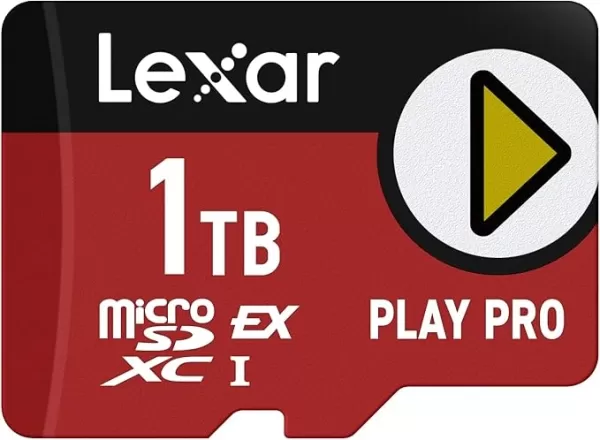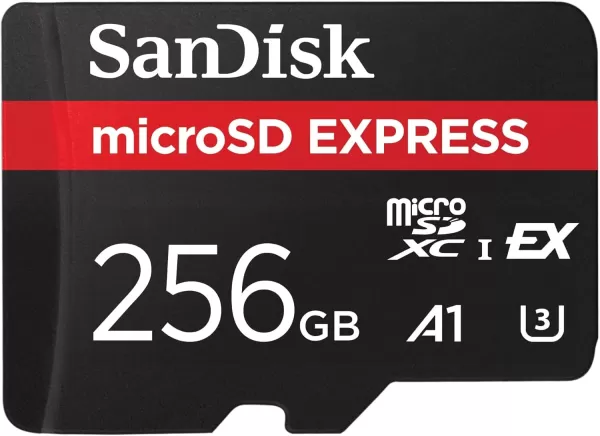MicroSD Express: Essential for Nintendo Switch 2
Last week, Nintendo unveiled the much-anticipated Nintendo Switch 2, revealing that the new console exclusively supports expansion through MicroSD Express cards. While this might be inconvenient for those with existing MicroSD collections, the decision is grounded in the significantly enhanced speed of MicroSD Express cards. These cards utilize a PCIe 3.1 interface, enabling them to achieve read/write speeds comparable to the UFS (Universal Flash Storage) in the Switch 2's internal storage. This means games stored on an expansion card can theoretically load just as quickly as those stored internally, albeit at the cost of not being able to use older, less expensive MicroSD cards.
MicroSD vs. MicroSD Express
Over the years, MicroSD cards have evolved through various speed ratings. Initially, SD cards were limited to a mere 12.5MB/s, but advancements led to the introduction of SD High Speed at 25MB/s, culminating in the SD UHS III standard at 312MB/s. The game-changer came five years ago with the SD Association's release of the SD Express standard, which employs a PCIe 3.1 interface instead of the slower UHS-I. This shift allows full-sized SD Express cards to reach transfer speeds of up to 3,940MB/s, a substantial leap from previous standards. MicroSD Express cards, while not as fast as their full-sized counterparts, still achieve impressive speeds of up to 985MB/s, tripling the performance of the fastest non-Express MicroSD cards.
Why Does the Switch 2 Require MicroSD Express?
Although Nintendo typically keeps its hardware decisions under wraps, the rationale behind requiring MicroSD Express cards for the Switch 2 is clear: speed. The use of a PCIe 3.1 interface in MicroSD Express cards ensures faster game loading times compared to traditional UHS-I MicroSD cards. This aligns with the Switch 2's internal storage upgrade to UFS from eMMC, ensuring that expansion storage matches the console's internal performance. Early demos have shown significant load time improvements, with fast travel in games like Breath of the Wild reduced by 35% according to Polygon, and a threefold initial load time improvement noted by Digital Foundry. These enhancements could be attributed to both the faster storage and the improved CPU and GPU, which can process data more efficiently. By requiring MicroSD Express, Nintendo ensures that future games demanding faster storage won't be bottlenecked by slower SD cards.
Moreover, this requirement paves the way for even faster storage solutions in the future. The current SD 8.0 Specification allows full-size SD Express cards to reach speeds up to 3,942MB/s, and while MicroSD Express cards aren't there yet, they have the potential to reach these speeds as technology advances.
AnswerSee ResultsMicroSD Express Capacity Options
Currently, MicroSD Express cards are not widely available, but this is expected to change with the launch of the Nintendo Switch 2. Lexar offers a single MicroSD Express card in capacities of 256GB, 512GB, and 1TB, with the 1TB variant priced at $199. SanDisk, on the other hand, provides a 256GB MicroSD Express card, matching the internal storage of the Switch 2. As the console hits the market, we can anticipate an increase in available options, especially from manufacturers like Samsung, who are likely to introduce higher capacity cards in the near future.

Lexar Play Pro MicroSD Express
0See it at Amazon
SanDisk MicroSD Express 256GB
0See it at Amazon-
Echocalypse stands as one of the freshest turn-based RPGs to hit global markets. Developed by Yoozoo Singapore Pvt Ltd, this anime-inspired chibi-style 3D game featuring a sci-fi post-apocalyptic narrative has already gained traction in Southeast AsiAuthor : Nicholas Nov 07,2025
-
The Elden Ring Nightreign adventure begins! Select your Nightfarer and venture into Limveld, striving to defeat the Nightlord before the relentless rains consume you. Partnering with Maxroll, we present comprehensive guides to kickstart your journey—Author : Caleb Nov 07,2025
- Black Ops 6 Zombies: How To Configure The Summoning Circle Rings on Citadelle Des Morts
- Harvest Moon: Lost Valley DLC and Preorder Details Revealed
- Roblox: Latest DOORS Codes Released!
- Silent Hill 2 Remake Coming to Xbox and Switch in 2025
- Roblox: Blox Fruits Codes (January 2025)
- Roblox: Freeze for UGC Codes (January 2025)


















![Taffy Tales [v1.07.3a]](https://imgs.ehr99.com/uploads/32/1719554710667e529623764.jpg)




